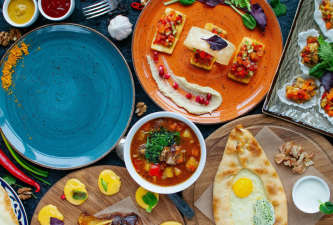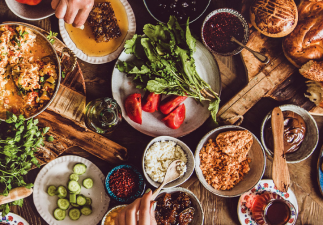What Can Food Teach Us About Cultural Differences?
Food, a fundamental human need, is more than just about filling the stomach; it's also a reflection of culture.

- In Western culinary culture, meat and dairy products are commonplace. For example, in Europe and the United States, steak, hamburgers, and cheese are popular. This is because their geographical environment is suitable for animal husbandry, with vast grasslands providing excellent conditions for raising cattle and sheep.
- Eastern culinary culture, on the other hand, is rich and diverse. For example, Chinese cuisine features a wide variety of ingredients, including grains, vegetables, and beans. Rice and noodles are staple foods, complemented by a variety of seasonal vegetables, soy products, and a small amount of meat. This is closely related to the Eastern region's advanced agricultural civilization and a climate suitable for growing crops.
- In Japan, surrounded by the sea, seafood is a key component of its diet, with sashimi and sushi being among its most representative delicacies.
- Western cooking emphasizes nutrient retention, often using methods like pan-frying, grilling, and deep-frying. For example, pan-frying steak quickly locks in juices and preserves nutrients like protein. Roasted chicken is also a common Western dish, simply seasoned and grilled, resulting in a golden, crispy skin and a tender, juicy interior.
- Chinese cooking methods are diverse, encompassing stir-frying, stewing, boiling, steaming, pan-frying, deep-frying, and grilling. Stir-frying emphasizes the right heat and seasoning to maximize the color, aroma, and flavor of the ingredients. Stewing, for example, allows the nutrients in the ingredients to fully release into the broth, such as braised pork and chicken soup.
- Indian cooking favors the use of a variety of spices, creating unique dishes like curry through grilling, frying, and boiling. Spices not only enhance the flavor of food but are also believed to have medicinal properties.

- In the West, dining is typically done with a knife and fork. Hold the fork in your left hand and the knife in your right, cutting and eating one piece at a time. Silence is important during meals, and loud conversations are avoided. For example, at formal Western banquets, people speak quietly and pay attention to the proper placement and use of tableware.
- In China, it's customary to use chopsticks. Elders pick up their chopsticks first, followed by younger generations. While conversation is acceptable, it's best to be quiet. In China, everyone sits together and shares the food, embodying a sense of togetherness.
- In the Middle East, people typically use their right hand to grab food, and their left hand is not permitted, as it's considered unclean in their culture. There are also specific etiquette practices during meals, such as how to pass food.




